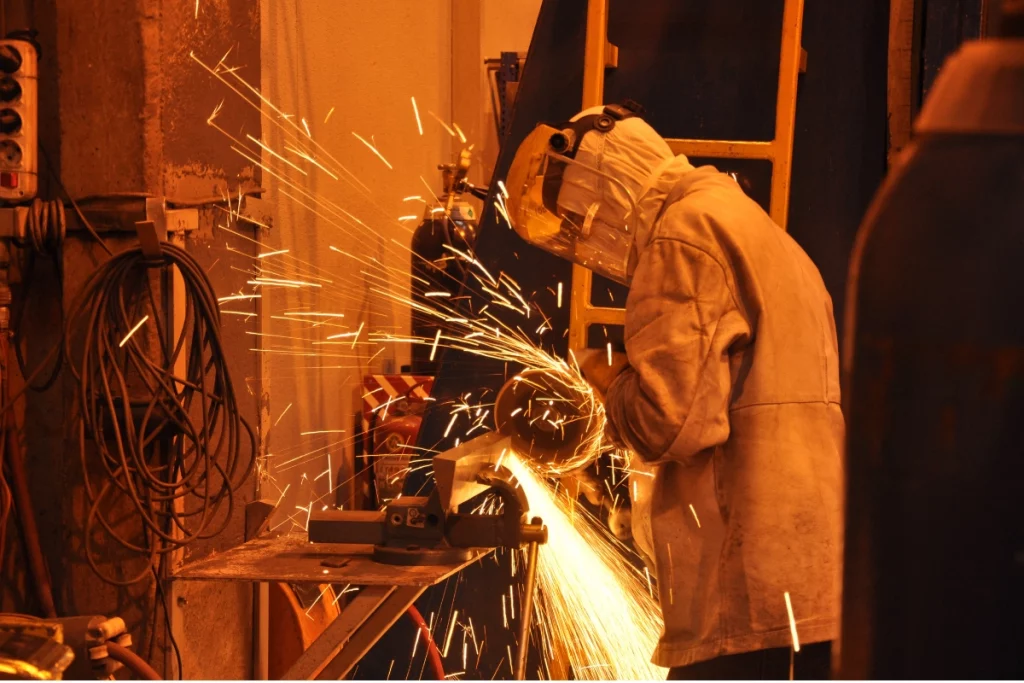Table of contents
From 2018 to 2021 an average of 88,000 workers in the UK suffered from ill health, and there were 57,000 non-fatal injuries each year.
And while these numbers have been steadily decreasing over the last few decades, there’s always room for improvement, especially when it comes to defining and correcting for potential risk. This is the role of the permit-to-work (PTW) system. In this piece, we’ll examine what this system is, how it works, why it matters, and offer an example of a PTW that demonstrates its importance for both frontline staff and managers.
What is a Permit to Work System?
According to the Health and Safety Executive, work permit systems are “required to control work such as maintenance activities on chemical plants and so prevent a major accident.”
Permits to work are required in cases where the possibility of significant harm to staff or the environment is present. There are multiple types of work permits, including:
- Handling hazardous substances or corrosive materials
- Using high-voltage equipment
- Work at heights
- Excavation efforts
- Confined space entry
- Hot work permits
- Cold work permits
As noted by the HSE, the permit should specify the period of its validity, which should not exceed 24 hours, state the location and the details of the work being done, along with information about any assessed risks and the steps taken to mitigate these risks. Permits should be signed by authorized officers, and the person responsible for authorization should not be the same person carrying out the work. When work is completed, the permit should be closed.

Why was the Permit to Work System Implemented?
The goal of PTW systems is to reduce the risks of hazardous work.
Some of these risks include:
- Exposure to materials or hazards that could result in worker illness, injury, or death
- Exposure to hazards that could put members of the public at risk of illness, injury, or death
- Damage to the environment as a result of hazardous material spills or chemicals
- Failure to comply with legal regulations around the type of work undertaken
Permits make it possible for businesses to collect data about relevant risks. Ultimately allowing to codify the data into best practices that supersede other instructions until work is complete.
The Importance of the Permit to Work System for Frontline Workers and Safety Managers
By defining the scope of the work procedure to be performed, safety managers can effectively identify and mitigate potential risks and create a safe system of work. And by referring to the permit as the master instruction when it comes to the type of work to be performed and the way in which this work should be carried out, frontline workers can avoid potential missteps that could result in harm or hazardous events.
Consider a hot work environment, which covers any task that could act as a source of ignition and therefore a fire hazard. Common examples include welding, grinding, cutting, brazing, or soldering. In the UK, the HSE requires companies to complete a hot work permit. In the United States, both OSHA and the National Fire Protection Agency (NFPA) require the use of these permits.
Components of a hot work permit include:
Description of the Work Activities Being Performed
What type of work is being performed, and what is the desired outcome? In the case of welding, what type of welding (SIG, TIG, etc.) is being done and what is being welded?
Documentation of Potential Hazards
What are some of the potential environmental hazards of this work? Risk assessments and hazard identification may reveal issues such as sparks, flammable liquids, hot work equipment, and the presence of dust or dirt in the air.
Safety Measures Taken
What steps have been taken prior to starting work in a high-risk environment, and what measures will be taken during the work to improve safety? Pre-work efforts could include making sure that fire extinguishers are nearby and still in service, that metal shielding is installed and fire alarms are easily accessible. During work, safety measures might include proper personal protective equipment (PPE) and the use of spark watchers to reduce total risk.
The more specific and descriptive your permit the better. Not sure where to get started? Use our hot work permit checklist to help capture all relevant work and safety data before permits are completed and signed.

30+ Audit and inspection checklists free for download.
You may also be interested in:
What Is A Hot Work Permit And How It Works



